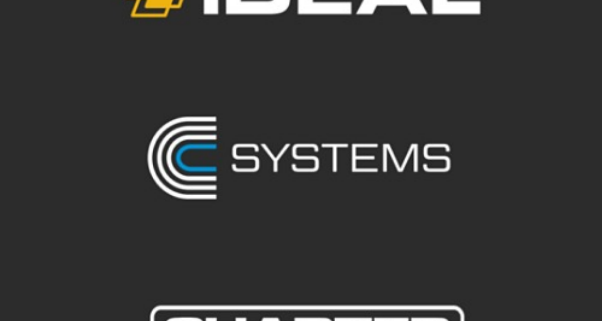5 Important Takeaways from Constellation Dealer’s 2020 Dealership Market Data

No doubt about it, 2020 was an unprecedented year for the dealership industry. Many dealers were impacted by a perfect storm of operational hurdles caused by the COVID-19 pandemic and multiple natural disasters.
Yet, despite those challenges, 2020 ended up being a positive year for the majority of OPE dealers across the United States. Wholegoods revenue was up 22% over 2019, and volume was up 30% over 2019.
Why exactly was that?
To understand what made 2020 such a stand-out year for dealers, we need to look at the data.
Last week, Don Miller, Data Consultant at Constellation Dealership Software (parent group of Ideal Computer Systems, c-Systems, and Charter) hosted a session at the 4th installment of the Rural Lifestyle Dealer’s Dealer Success Academy. Don has been consulting and training dealers for the last two decades. He has spoken at several national trade conventions in the OPE, RV, and auto industries and his writing has been published in several trade magazines.
In his session, Don shared insights from extensive sales and inventory data collected by Constellation Dealer throughout 2020. Here’s a recap of Don’s insights on what happened to the dealership market in 2020, and what dealers should keep in mind for this year.
1. The Beginning of the Pandemic Caused a Lull in Wholegoods Revenue
 The pandemic had just begun to pick up speed in Q1. Cases in California and New York rose rapidly, and the lockdowns in the West and Northeast were necessarily some of the most severe, affecting all aspects of dealership activity. While the national wholegoods revenue was down 8%, the West was down 19% and the Northeast was down 21%.
The pandemic had just begun to pick up speed in Q1. Cases in California and New York rose rapidly, and the lockdowns in the West and Northeast were necessarily some of the most severe, affecting all aspects of dealership activity. While the national wholegoods revenue was down 8%, the West was down 19% and the Northeast was down 21%.
With the first stimulus package passed in March, combined with easing restrictions, Q2 saw significant increases in parts and wholegoods. Revenue for wholegoods was up 41% in June (making it the best month of the year for Revenue YOY Growth) and the dealerships in the West and Northeast went from negatives to positives quickly, finishing the quarter up 15% and 25% respectively.
2. Natural Disasters Spurred an Increase in Demand for Wholegoods
 During Q3, with no stimulus package, dealers continued to see increased demand with wholegoods volume—up 39% for the nation. That made Q3 the best overall quarter for revenue.
During Q3, with no stimulus package, dealers continued to see increased demand with wholegoods volume—up 39% for the nation. That made Q3 the best overall quarter for revenue.
At the same time, the South was experiencing a record-setting tropical season, with four hurricanes and several tropical storms making landfall. Two-thirds of the dealerships in the South experienced double-digit increases in wholegoods volume, resulting in the region seeing a 44% increase over 2019.
This trend continued into Q4, with two more hurricanes and a tropical storm making landfall in October and November. Dealerships in the South continued to see strong a demand for wholegoods, with a 50% increase in volume over Q4 2019.
3. Technology Allows Your Dealership to Adapt
 You never know exactly what the future has in store, but you can take measures to future-proof your business against potential threats.
You never know exactly what the future has in store, but you can take measures to future-proof your business against potential threats.
With so many unexpected challenges thrown at them, most dealers were forced to adapt their business processes in one way or another in 2020. But dealerships that used technology like a dealership management system were able to adapt and even thrive under the circumstances. That’s because a tool like a DMS gives dealers the ability to monitor data for each of their departments, identify bottlenecks more quickly, and connect with customers and manufacturers more effectively.
4. Customer Communication is Key
 Communication is the foundation of any solid relationship, and that certainly applies to customer relations.
Communication is the foundation of any solid relationship, and that certainly applies to customer relations.
Whether dealers were faced with lockdown due to the pandemic, or a large-scale natural disaster, communication with customers seemed to be the key to most dealers’ success. Dealerships that maintained good communication with their customer base using DMS tools like CRM email blasts, texting, social media, and a regularly maintained website were the most successful.
That’s because dealers were able to communicate hours of operation, inventory information, and available services.
5. Stay on Top of Your Inventory
 Parts management can be a major headache for many dealerships, without a pandemic thrown into the mix.
Parts management can be a major headache for many dealerships, without a pandemic thrown into the mix.
Wholegoods inventory levels took a turn in the third and fourth quarters, affecting all regions—ending the year down 8% compared to 2019. Because the pandemic caused so many parts shortages, it became imperative for dealers to monitor their inventory closely.
Dealers who used tools like a DMS inventory management system, or online parts locators, were able to monitor their inventory levels and source new parts more effectively than those who didn’t.
Conclusion
Data is a powerful tool for making informed, smart business decisions. As we all continue to navigate the winding road ahead, paying attention to both your dealership’s data and the wider market data will help you identify opportunities faster and adapt your business processes more effectively.
Dealers interested in gaining more insights into the latest dealership industry data can sign up for Constellation Dealers’ monthly market data report here.
